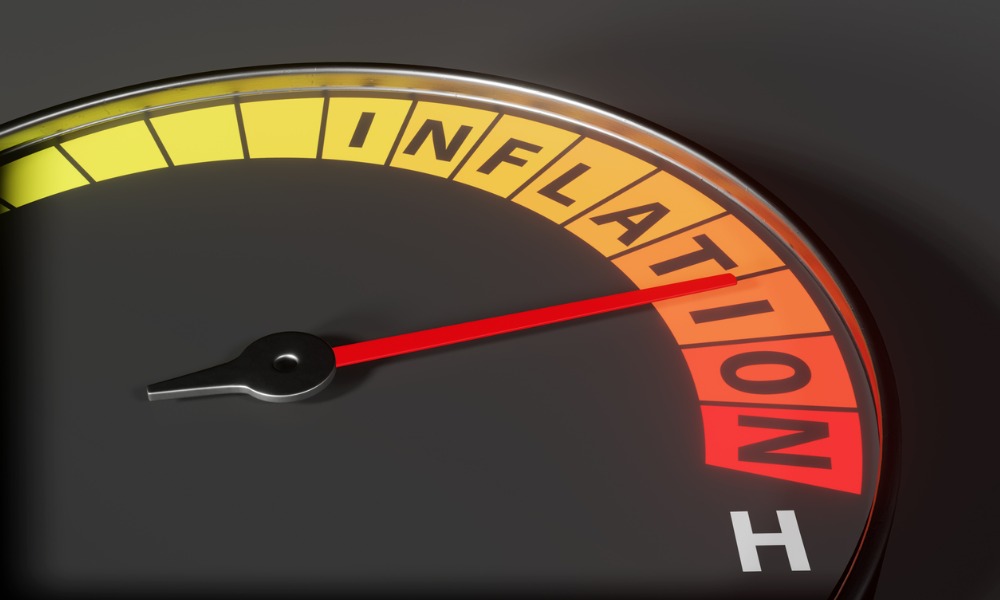Easing costs for essentials like food, energy, and cars bring US inflation to its lowest level since 2021

Inflation eased in July as price pressures on essential goods such as food, energy, and automobiles decreased, according to a report from the US Department of Labor.
The consumer price index (CPI), a key inflation measure, rose by 2.9 percent over the past year, down from 3 percent in June, marking the lowest rate since March 2021.
The CPI tracks price changes across the US economy, including items like groceries, haircuts, and household appliances. Mark Zandi, chief economist at Moody’s, described the CPI report as “right down the strike zone,” noting that inflation for groceries is growing very slowly, which is vital for consumers.
He also emphasized the positive impact of stable prices for gasoline and rents, particularly benefiting lower-income households.
Since its peak of 9.1 percent in mid-2022, the highest since 1981, inflation has significantly declined. It is now approaching the Federal Reserve's long-term target of around 2 percent.
Joe Seydl, senior markets economist at J.P. Morgan Private Bank, expressed confidence, stating, “We think we’re through the worst of it from an inflation perspective.”
The Federal Reserve relies on inflation data to shape its interest rate policies. During the COVID-19 pandemic, the Fed raised interest rates to a 23-year high to control inflation, increasing borrowing costs for consumers and businesses.
Recent labour market data has sparked recession fears among some investors, but economists generally view these concerns as premature.
Nevertheless, the combination of easing inflation and a cooling labour market could lead the Fed to reduce interest rates at its September policy meeting, which would lower borrowing costs and support the economy.
Paul Ashworth, chief North America economist at Capital Economics, noted that the CPI report strengthens the case for a 0.25 percentage point rate cut in September.
However, housing costs remain a significant factor keeping inflation above the Fed’s target. The shelter index, which heavily influences the CPI, has increased by 5.1 percent since July 2023, accounting for more than 70 percent of the annual rise in the core CPI.
The core CPI excludes food and energy costs, which are often volatile. While shelter inflation fell to 0.2 percent in June, it rose again to 0.4 percent in July.
Economists explain that housing inflation tends to change slowly due to the government’s measurement methods, which can obscure more favourable trends in the real-time rental market.
Zandi pointed out that when excluding shelter, inflation is below the Fed’s target, suggesting the fight against inflation is nearing success.
Other categories with notable inflation include motor vehicle insurance (up 18.6 percent), medical care (up 3.2 percent), personal care (up 3.4 percent), and recreation (up 1.4 percent).
The previous surge in car prices has contributed to higher costs for insurance premiums and vehicle repairs, but economists anticipate these costs will decline as car prices fall.
For example, new vehicle prices have dropped by 1 percent, and used car and truck prices have decreased by nearly 11 percent over the past year.
Egg prices, which spiked in 2022 due to a bird flu outbreak, have risen again, increasing by 19 percent over the last year. Other food items, such as bacon and crackers, have also seen price increases but experienced declines in July, hinting at potential further reductions.
Overall, grocery inflation was 1.1 percent in July, down from an average of 11.4 percent in 2022, which was the highest since 1979.
Inflation for physical goods surged as the US economy reopened in 2021, driven by supply chain disruptions and changes in consumer spending patterns. However, goods inflation has since stabilized.
Meanwhile, services inflation, which is more responsive to labour costs, is expected to decrease further as the job market cools and wage growth slows. Seydl noted that high interest rates have also helped reduce overall inflation by dampening demand.



